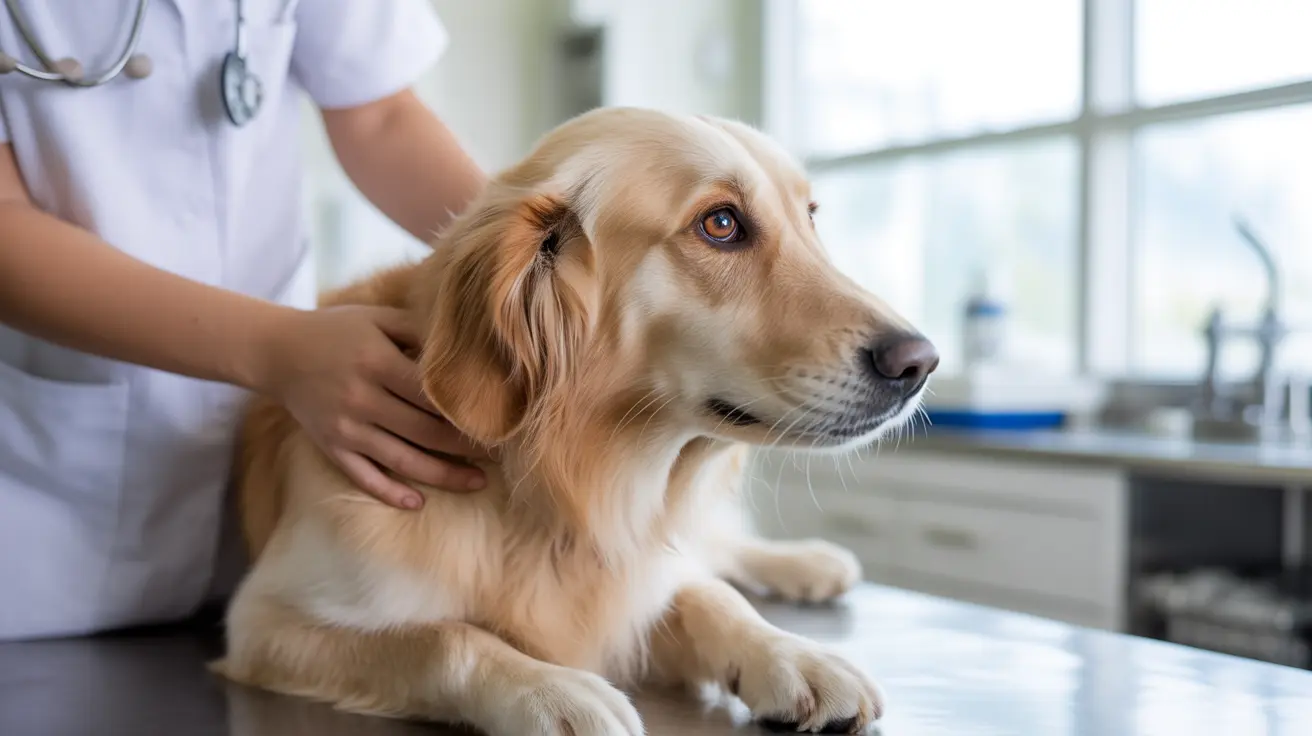How to Read Your Dog's Stool for Health Signs: A Complete Owner's Guide
As a dog owner, you've probably found yourself examining your pet's waste more than you ever imagined you would. While it might seem unpleasant, learning how to read your dog's stool for health signs is one of the most valuable skills you can develop as a responsible pet parent. Your dog's poop serves as a window into their digestive health and overall wellbeing, providing crucial information that can help you detect potential problems early.
Since dogs can't verbally communicate when they're feeling unwell, we must rely on other indicators of their health status. Veterinarians consistently emphasize that stool characteristics offer tremendous insights into your dog's digestive and overall health, which is why they often request fecal samples during routine visits. By understanding what normal dog stool looks like and recognizing when changes occur, you can become an active participant in maintaining your pet's health and catching potential issues before they become serious problems.
This comprehensive guide will teach you how to assess your dog's stool using the same methods veterinarians employ, helping you distinguish between normal variations and concerning changes that warrant professional attention.
Understanding the Four C's: The Veterinary Approach
When evaluating dog stool, veterinarians commonly use a systematic approach known as the "Four C's": color, consistency, content, and coating. This methodical framework ensures that no important aspects are overlooked during assessment and provides a comprehensive picture of your dog's digestive health.
Color: Decoding What Different Hues Mean
Normally, healthy dog stool appears chocolate brown due to bile pigments that are processed during the digestive process. This rich brown color indicates that your dog's liver, gallbladder, and digestive system are functioning properly. While minor variations can occur due to dietary factors, significant color changes often signal underlying health issues that require attention.
Several abnormal stool colors should raise immediate concern:
- Black stool: Often indicates bleeding higher up in the digestive tract and represents a veterinary emergency
- Red streaks: Suggest bleeding in the lower digestive tract, frequently due to rectal trauma or infection
- Grey or yellow stools: May signify issues with the pancreas, liver, or gallbladder
- Green poop: Can result from eating grass or indicate parasites or gallbladder problems
- Orange poop: May signal liver or biliary issues
- White poop: Often results from calcium-rich diets featuring bones and may cause constipation
- Grey and greasy poop: Can indicate pancreatic or biliary problems and may suggest excess dietary fat
If abnormal colors persist for more than two consecutive stools, veterinary attention is warranted to rule out serious underlying conditions.
Consistency: Evaluating Firmness and Shape
The firmness and shape of your dog's stool provide valuable information about their digestive health and hydration status. Many veterinarians use a fecal scoring system ranging from 1 to 7, where 1 represents very hard pellets and 7 indicates watery diarrhea.
The ideal stool consistency scores a 2 on this scale—firm, segmented, and moldable like Play-Doh. This consistency indicates proper water absorption in the large intestine and healthy digestive function. Formless or watery stools may suggest improper water absorption, while excessively hard stools can be painful for your dog and may reflect dehydration or insufficient fiber intake.
While occasional variations in consistency are usually not concerning, persistent changes lasting more than a day require veterinary evaluation. Diarrhea can result from dietary changes, food allergies, infections, or stress, while constipation may be caused by dehydration or insufficient fiber and can often be mitigated through increased hydration and exercise.
Content: What Should and Shouldn't Be Present
Healthy stool should appear uniform throughout, without visible foreign objects or parasites. However, several concerning contents may appear in your dog's waste:
- Worms: Visible roundworms or tapeworm segments indicate parasitic infection
- Foreign objects: Items like grass, plastic, or cloth suggest inappropriate ingestion
- Large clumps of fur: May indicate excessive grooming due to stress or skin issues
It's important to note that microscopic parasite eggs may be present even if the stool appears normal visually. Fresh fecal samples are crucial for accurate assessment since environmental contamination can obscure findings and lead to false results.
Coating: Identifying Mucus and Blood
Normal, healthy stool should not have any mucous or unusual coating. The presence of a mucous coating often indicates inflammation in the large bowel and frequently accompanies diarrhea. While occasional small streaks of bright red blood might occur due to straining during defecation, repeated occurrences require veterinary evaluation to rule out infections, injuries, or other serious conditions.
Frequency and Size: Additional Important Indicators
Beyond the Four C's, frequency and size of bowel movements provide additional insights into your dog's digestive health. The frequency of stooling varies by age, size, and individual factors, but should remain relatively consistent on a daily basis. Sudden changes in frequency—whether increased or decreased—merit attention and potential veterinary consultation.
Stool size should roughly correspond to your dog's food intake and body size. Unusually large stools may indicate poor digestion or excessive food intake, while unusually small stools might suggest appetite problems, dehydration, or digestive inefficiency. The typical healthy stool shape resembles a solid log, while unusual shapes like pebble-like formations can indicate dehydration or even joint issues affecting your dog's posture during defecation.
When to Seek Veterinary Care
Most stool-related issues resolve within 24 hours if your dog is eating, drinking, and acting normally. However, certain situations require prompt veterinary attention:
- Abnormal colors persisting for more than two consecutive stools
- Consistency changes lasting more than 24-48 hours
- Presence of blood, mucus, or visible parasites
- Stool abnormalities accompanied by other symptoms such as lethargy, loss of appetite, vomiting, or behavioral changes
- Complete absence of bowel movements for more than 24 hours
Factors That Influence Stool Characteristics
Understanding that various factors can temporarily affect your dog's stool characteristics helps you distinguish between concerning changes and normal variations. Dietary changes can cause temporary alterations in color, consistency, or odor. Stress, changes in routine, new environments, or increased activity levels can also influence digestive patterns.
Seasonal changes may affect your dog's stool as well, particularly if they have increased access to outdoor activities or different environmental elements. However, any consistent abnormal signs lasting more than two weeks require veterinary consultation, regardless of potential contributing factors.
Collecting and Monitoring Stool Samples
When veterinary evaluation is necessary, proper sample collection ensures accurate diagnosis. Use a clean bag or container to collect fresh stool, ideally within a few hours of defecation. If you cannot bring the sample to your veterinarian immediately, proper storage (often refrigerated) maintains sample integrity for testing.
Documenting stool changes can provide valuable information to your veterinarian. Note the date, time, color, consistency, size, and any accompanying symptoms. This detailed record helps veterinarians identify patterns and make more accurate diagnoses.
Supporting Healthy Digestion
Regular monitoring should be combined with proactive measures to support your dog's digestive health. Probiotic supplements, hypoallergenic dog foods, and grain-free options with limited protein sources can support healthy digestion. Ensuring adequate hydration and providing regular exercise in a low-stress environment contribute significantly to normal digestive function.
Frequently Asked Questions
How often should my dog have bowel movements?
Most healthy adult dogs have 1-2 bowel movements per day, though this can vary based on age, size, diet, and individual factors. Puppies and senior dogs may have different patterns. What's most important is consistency in your dog's normal routine.
What does it mean if my dog's stool is very smelly?
Normal dog stool has a mild fecal odor. Strong or unusual smells may indicate digestive disturbances, excess dietary fat, or underlying health issues. If the odor is significantly stronger than usual or accompanied by other symptoms, consult your veterinarian.
Should I be concerned if my dog's stool color changes after switching foods?
Temporary changes in stool color following dietary changes are common and usually resolve within a few days as your dog's digestive system adjusts. However, if abnormal colors persist for more than two consecutive stools or are accompanied by other symptoms, veterinary evaluation is recommended.
How long can I wait before seeking veterinary care for stool abnormalities?
If your dog is eating, drinking, and acting normally, most stool issues resolve within 24 hours. However, seek immediate veterinary care for black stools, persistent bloody stools, or if abnormalities are accompanied by vomiting, lethargy, or loss of appetite.
Can stress affect my dog's stool characteristics?
Yes, stress can significantly impact digestive function and stool characteristics. Changes in routine, new environments, travel, or anxiety can cause temporary diarrhea or constipation. Maintaining a low-stress environment supports normal digestive function.
Is it normal for puppies to have different stool characteristics than adult dogs?
Puppies often have more frequent, softer stools than adult dogs due to their developing digestive systems and different dietary needs. However, the same general principles apply—monitor for significant changes and consult your veterinarian if abnormalities persist.
What should I do if I find worms in my dog's stool?
Visible worms indicate parasitic infection and require immediate veterinary attention. Collect a fresh sample if possible and contact your veterinarian promptly for appropriate deworming treatment and follow-up care.
Conclusion
Learning how to read your dog's stool for health signs is an invaluable skill that enables you to monitor your pet's wellbeing proactively. By understanding the Four C's—color, consistency, content, and coating—along with frequency and size indicators, you can identify potential health issues early and seek appropriate veterinary care when needed. Remember that healthy dog stool should be chocolate brown, firm yet pliable, segmented, and proportionate to food intake, without unusual coatings or foreign content.
While this knowledge empowers you as a pet owner, it should complement, not replace, regular veterinary care. When in doubt, consult your veterinarian, especially if abnormalities persist or are accompanied by other concerning symptoms. Your attentiveness to these important health indicators, combined with professional veterinary guidance, helps ensure your dog maintains optimal digestive health and overall wellbeing throughout their life.






